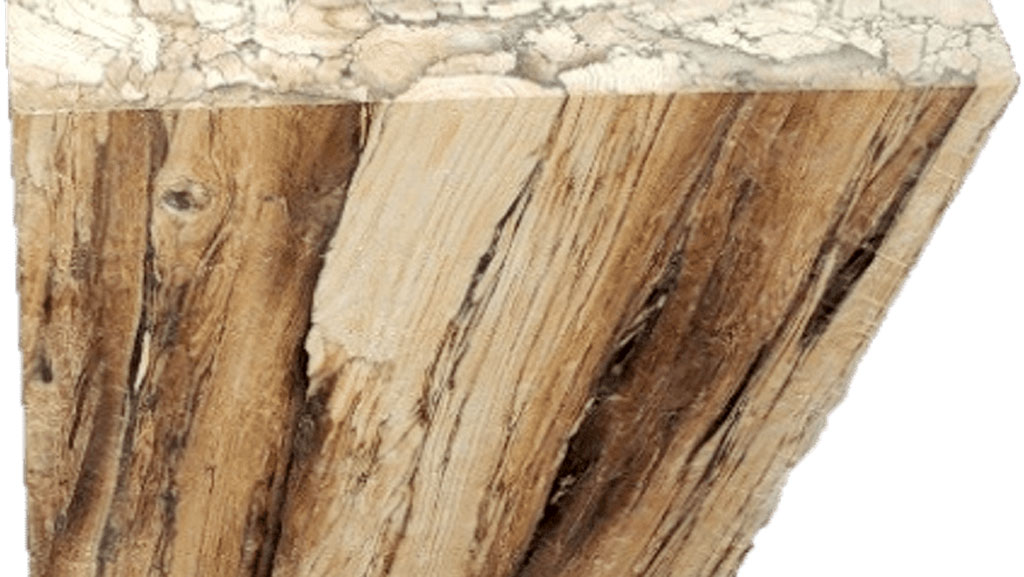In 1974 B.C. sawmill pioneer Conrad Miller saw a damaged two-by-four piece of lumber that had been run over by a log loader.
Be remarked to his son Jerry that there just had to be a way to piece it back together and sell it.
Decades later, his grandson, Owen Miller, never forgot this dream and is working on making it a reality.
“That’s really where this whole thing started,” said Miller.
His father and grandfather worked on the concept but it wasn’t until 2019 that Miller decided to go all-in to try to make it happen.
Back together again
Miller’s company, Deadwood Innovations, utilizes mechanical and chemical technology to essentially deconstruct wood and put it back together. This is especially useful for less desirable wood.
“We can take those low quality, small diameter softwoods that are cracked, impacted by pine spruce beetles, or burned in a fire with a layer of charcoal on the outside. Our process doesn’t care,” said Miller. “We can transform that into a novel engineered wood product that is of varying dimension and density.”
Miller noted Jamie Gordy, a wood science specialist, was key in developing the company’s chemical processes.
Target feedstocks include underutilized species like aspen and northern hardwoods that normally don’t have uses that make economic sense.
“It’s really about getting more value out of these resources,” said Miller. “They are a difficult tree to do anything else with for engineered wood processes, but our process is species agnostic. The species or the quality of the tree doesn’t matter. We can transform that and impart desirable characteristics that mother nature didn’t.”
Branching out
Deadwood Innovations secured federal and provincial funding to assess, engineer, procure and build a pilot-scale manufacturing plant at the site of the former Tl’Oh Forest Products mill in Fort St. James. The funding is provided through the Indigenous Forest Bioeconomy Program.
The team is still considering which novel engineered strand board products they will produce and which markets they will target. They are conducting market research to help with the decision. Some of the initial ideas include rail ties, insulated panels and studs and densifying dimensional products to replace steel joints in commercial building applications.
In addition to creating engineered strand wood products, the team believes the technology could be used for lumber upgrading. The technology is able to take a twisted or checked dimensional board and densify it and straighten it. It can transform it into a unique dimensional product or create a premium board.
It can also be used for biomass fuel conditioning. The team can take saturated residues from a sawmill and create a targeted low moisture content and predetermined pellet size.
Shaking the tree
Miller started Deadwood after spending 15 years carving out his own career in the oil and gas sector.
He decided the time was right to give his grandfather’s and father’s work a major push.
But he wanted to do it right.
One of the company’s first moves was to form a joint venture with the Nak’azdli Whut’en First Nation.
“My whole team is from Fort St. James and it was important to us to address reconciliation through our actions and not just saying the right things,” said Miller. “That partnership has been collaborative and excellent and they really believe in what we are doing and are part of our journey.”
Chief Aileen Prince called the joint venture an example of the nation’s increasing participation in forestry on its traditional territories.
“The commercialization of this technology will create more economic opportunities in our community and find new uses for waste, protecting our forests and wildlife for future generations,” said Prince in a press release.
Miller hopes their new approach can shake up the forestry sector.
“Research and development is a core competency of oil and gas businesses – the major ones,” said Miller. “I’m comfortable in saying that it is not a core competency of the large sawmilling and engineered wood product businesses in North America. So, when you’re a startup and you present something novel, there is a lot of skepticism because there haven’t been many game-changing technologies.”
Putting down roots
The preliminary schedule is to commence commercial scale front-end engineering and design study in September.
“You have to derisk and figure out what products to target initially, then design the facility around the product, keeping flexibility in mind,” said Miller.
That process timeframe is 18 to 24 months. That is when Miller believes the team will have all the information to make the final investment decision.
“This technology is able to scale and suitable for any fibre basket,” said Miller. “Our goal is to develop projects and commercialize in all the forestry-based communities, starting in the province and then moving through North America to shift to less volume and more value.”











We are so proud of you for taking you grandad and dads ideas and dream to reality. We wish you the best of luck on your endeavor! !!
We are so proud of you for taking your grandad and dads ideas and dreams to reality. We wish you the best of luck on your endeavor GOOD LUCK!!!